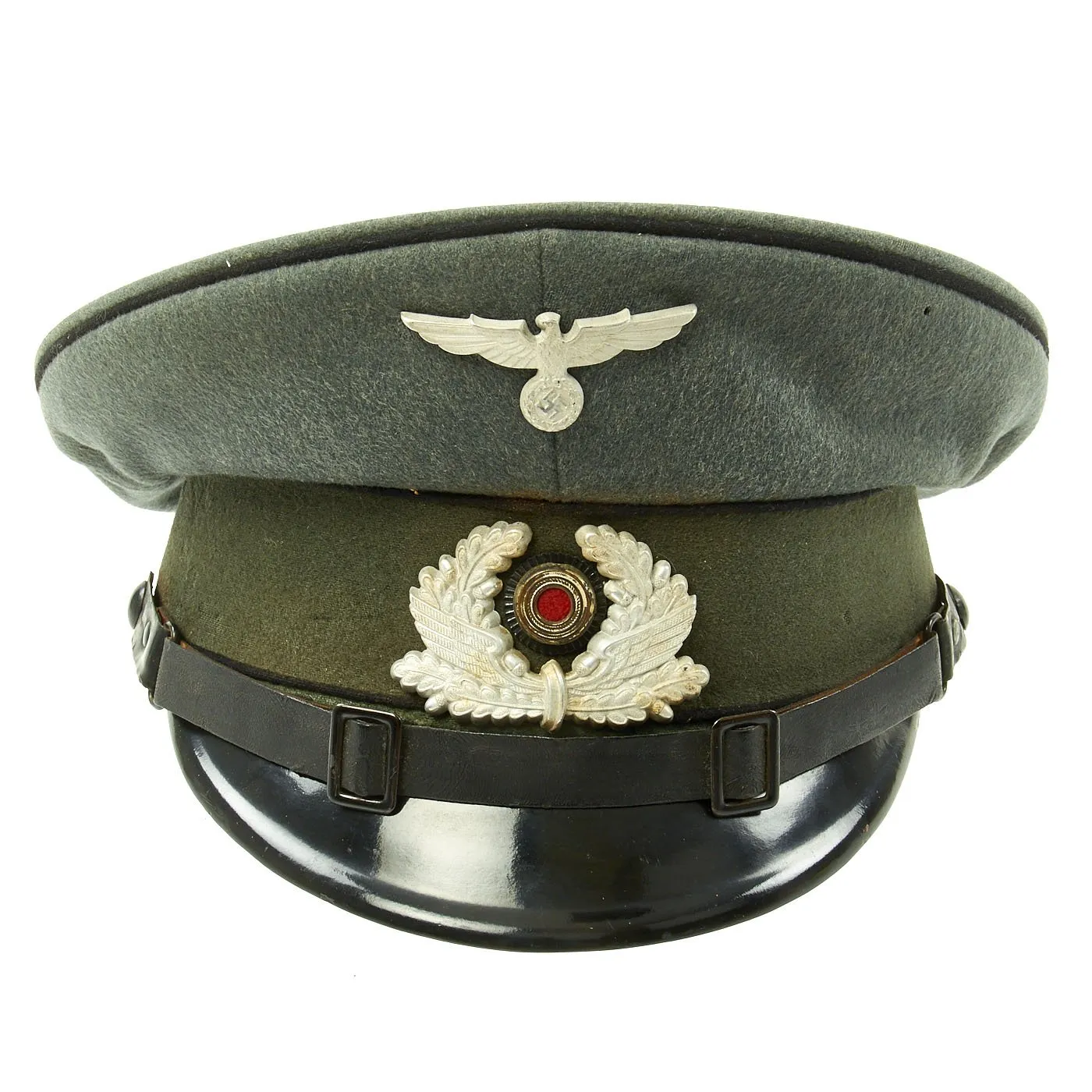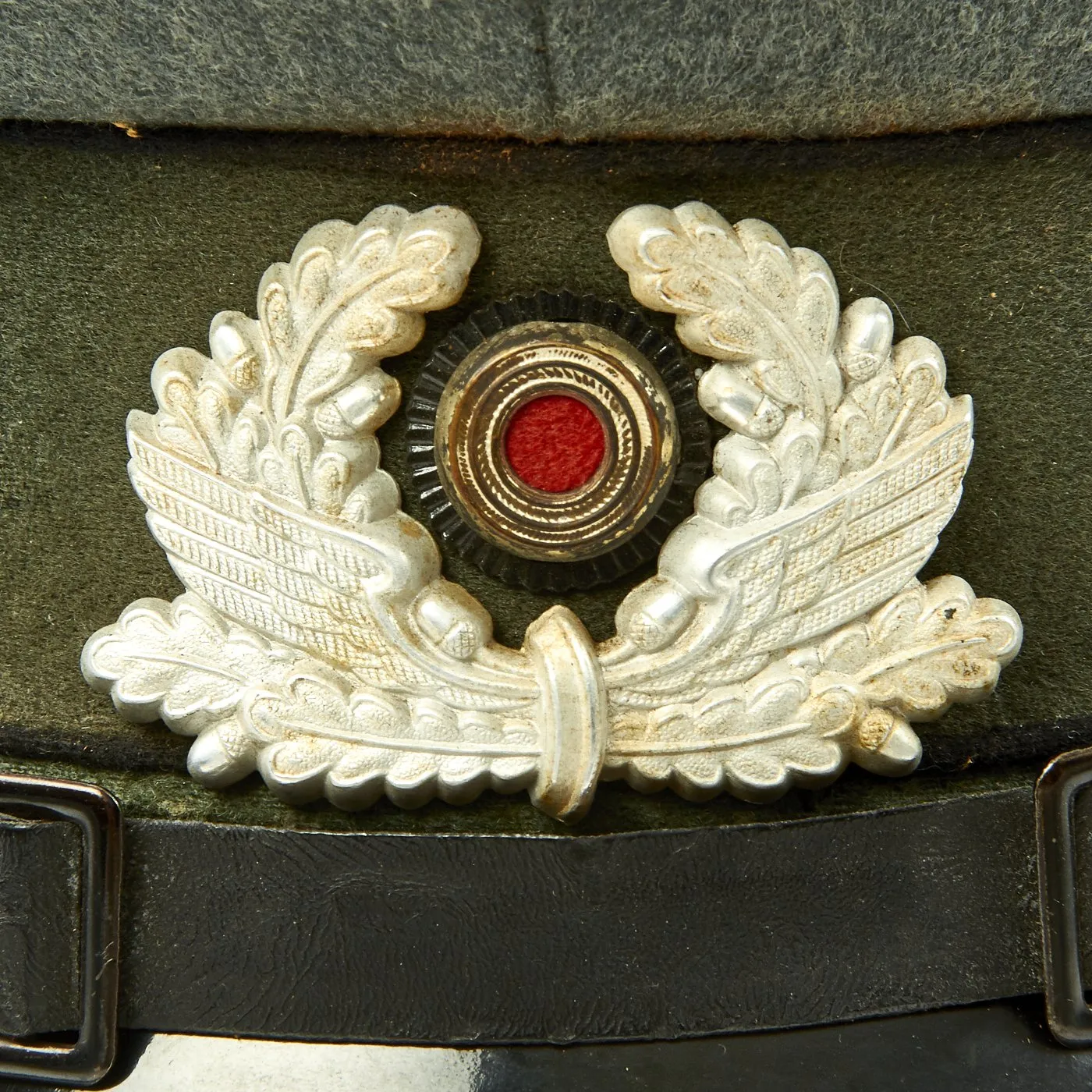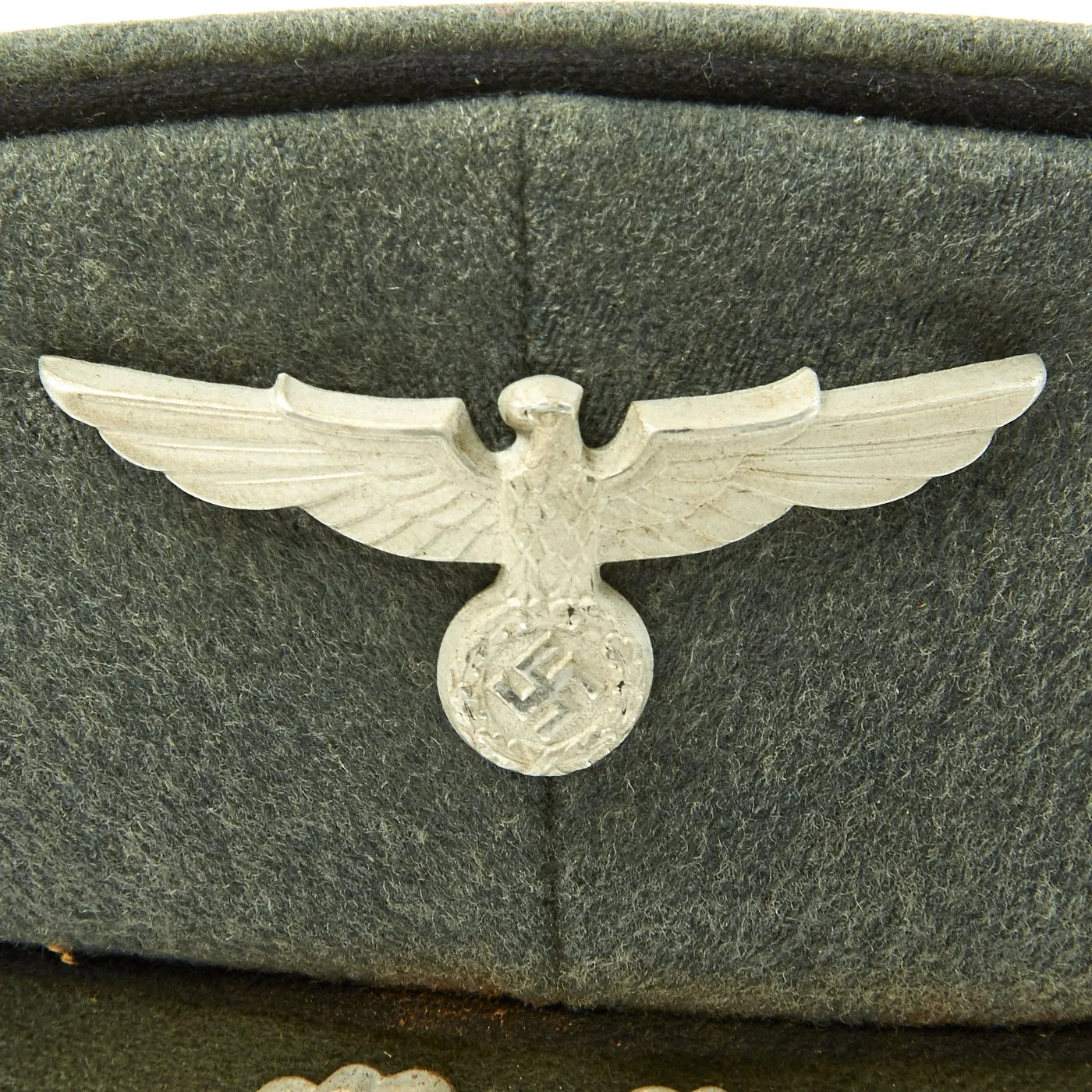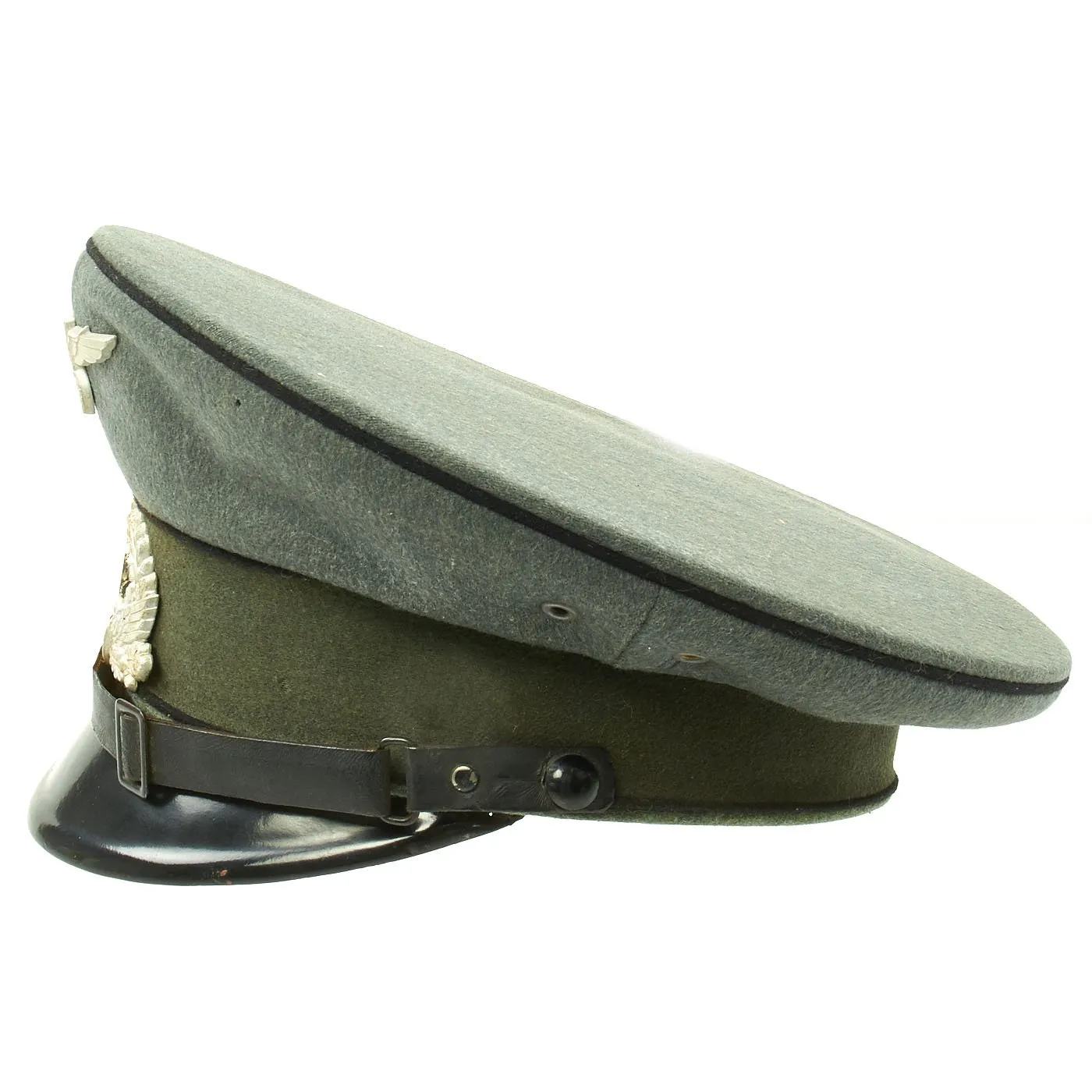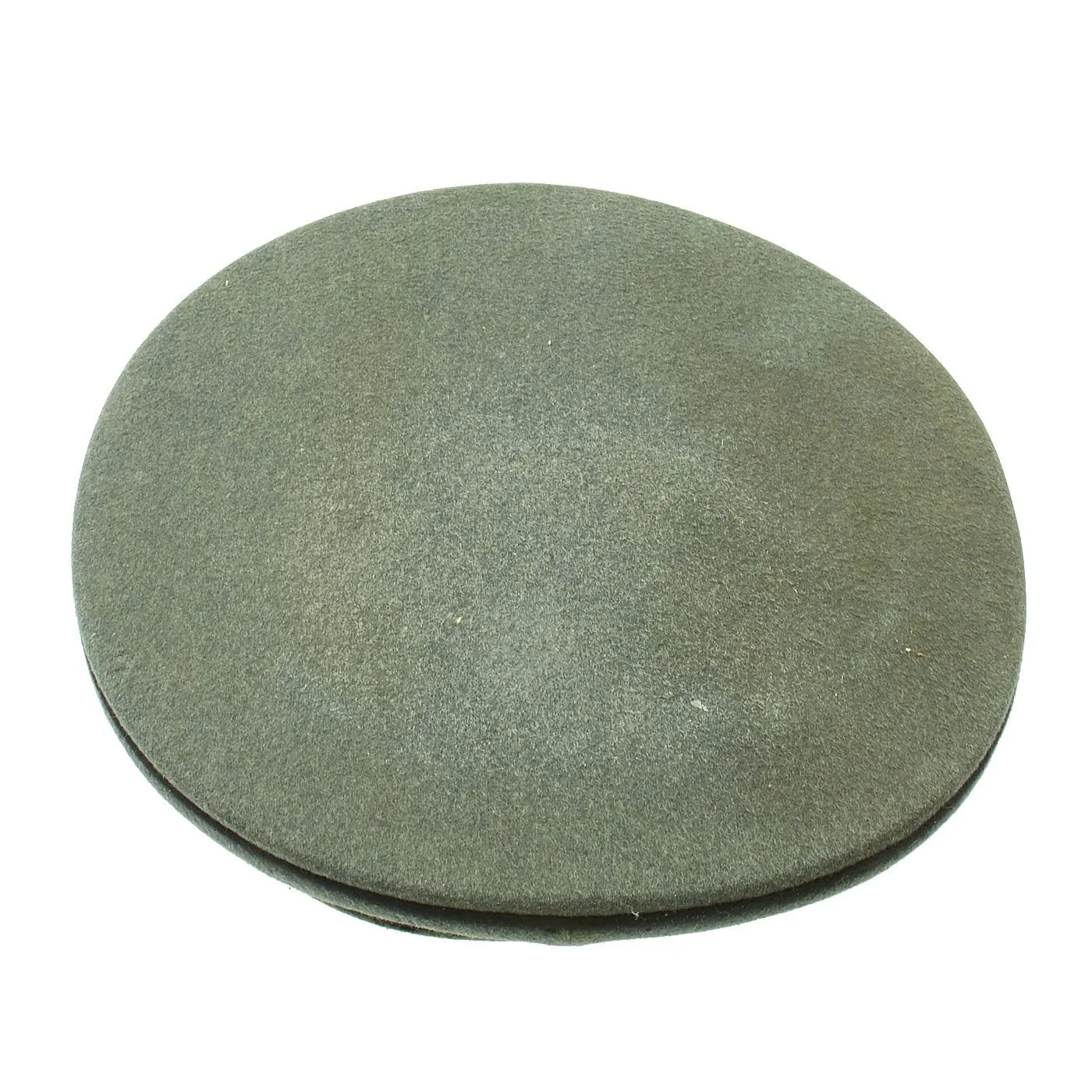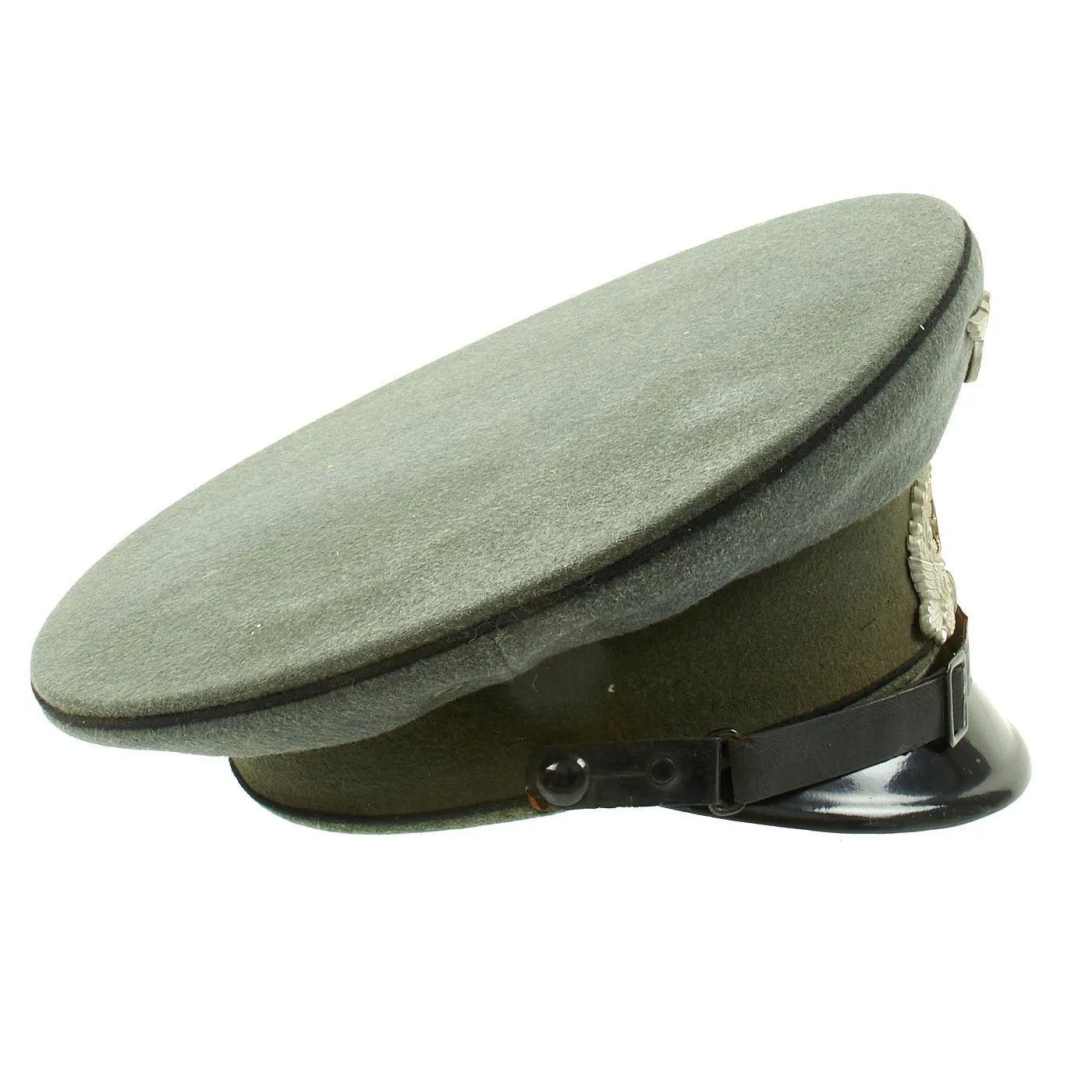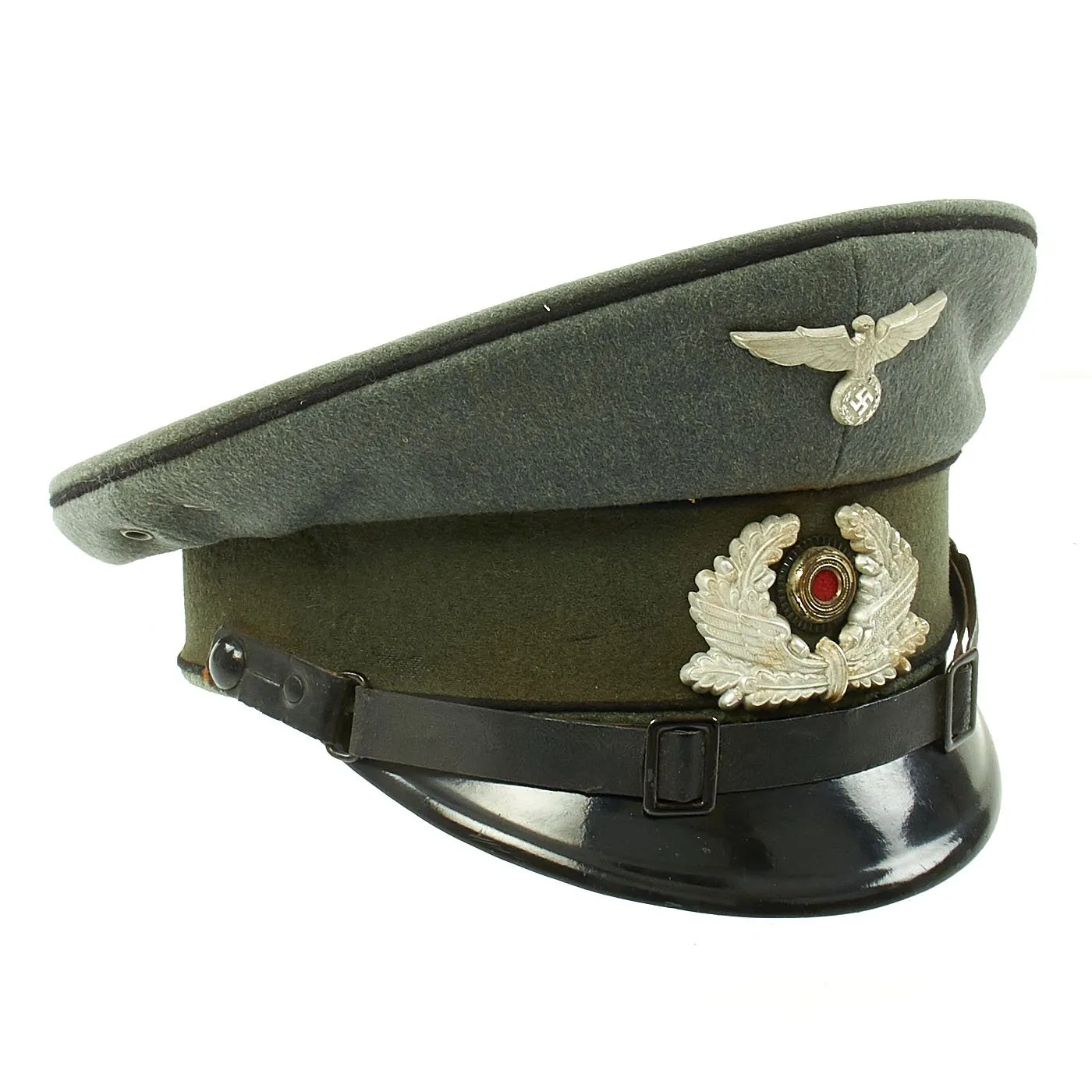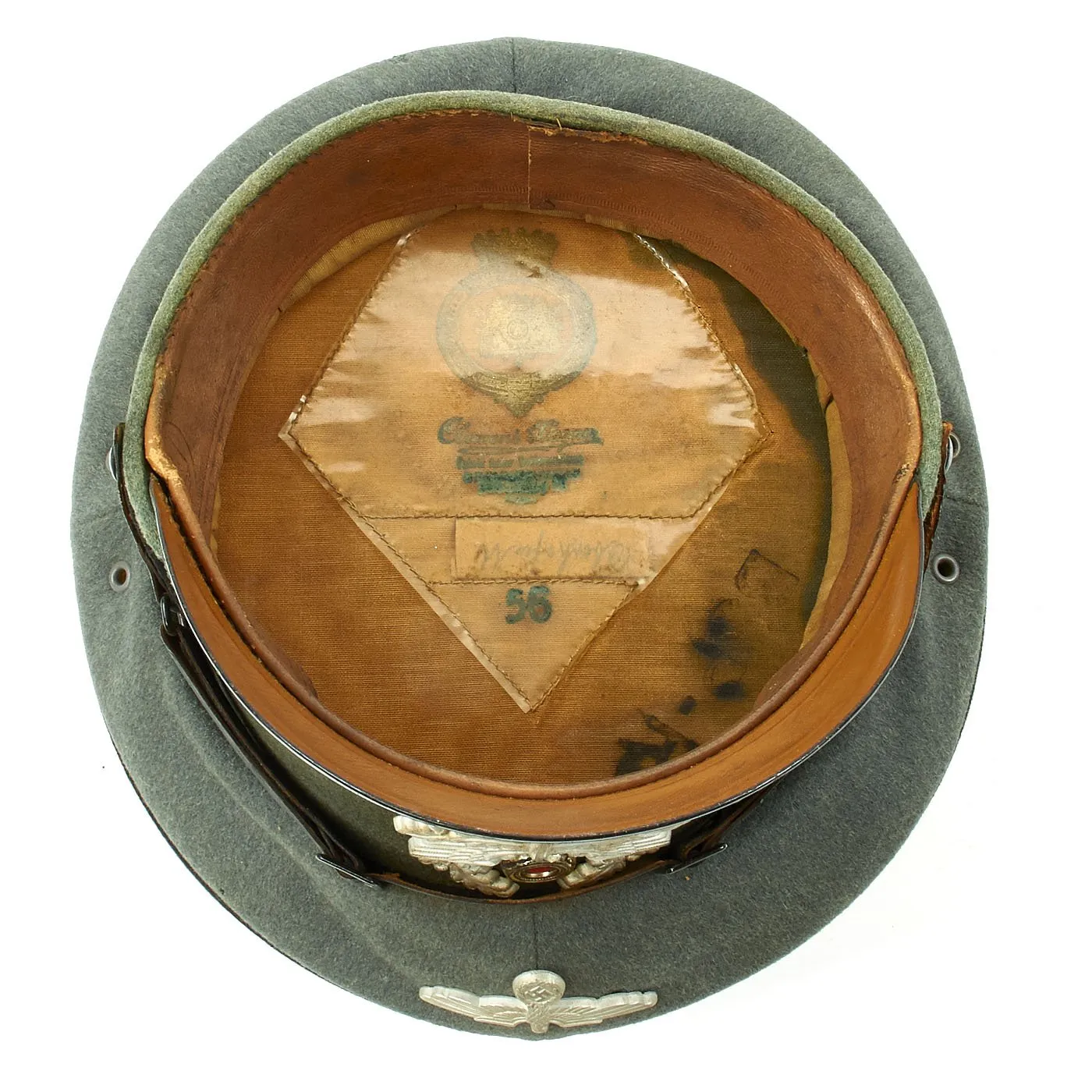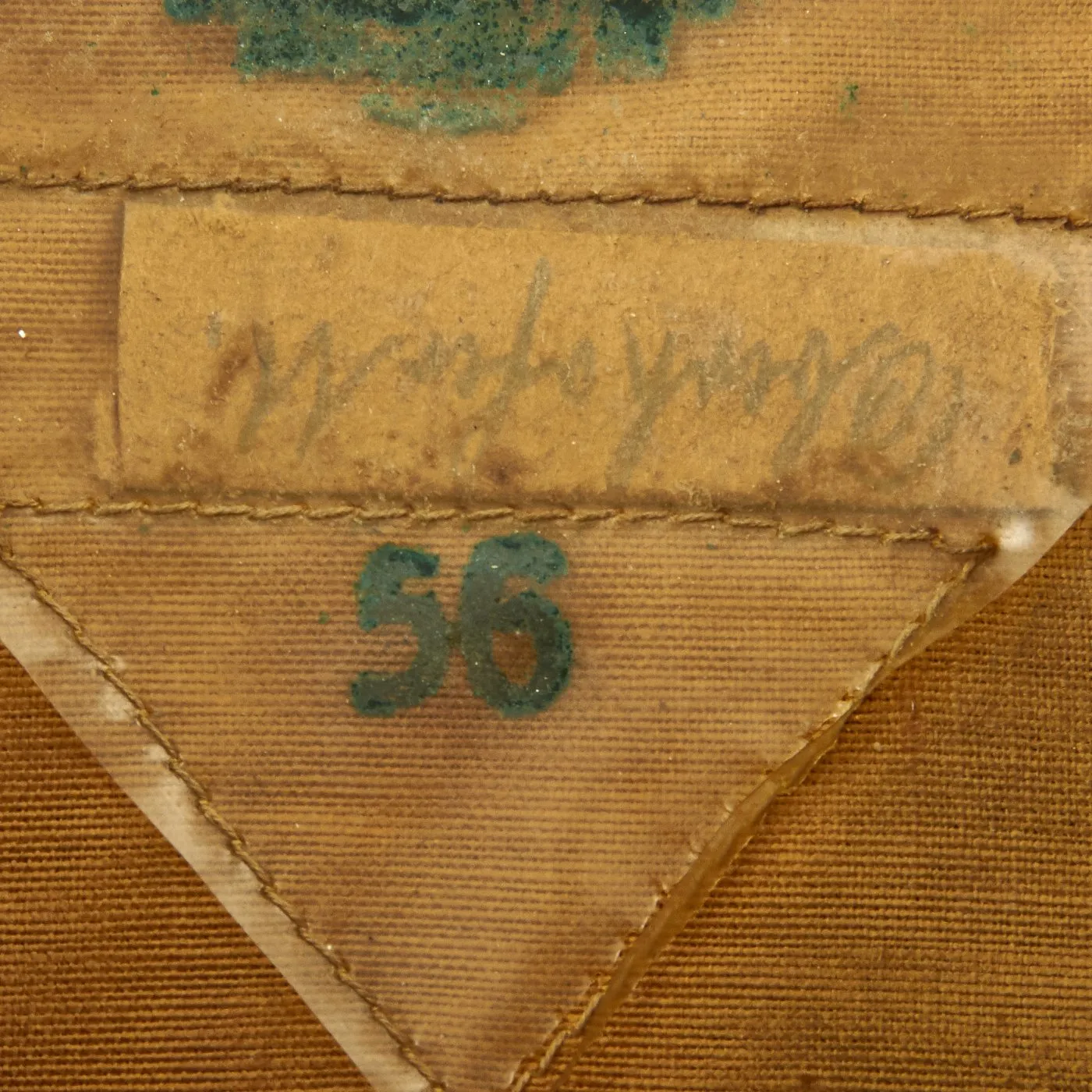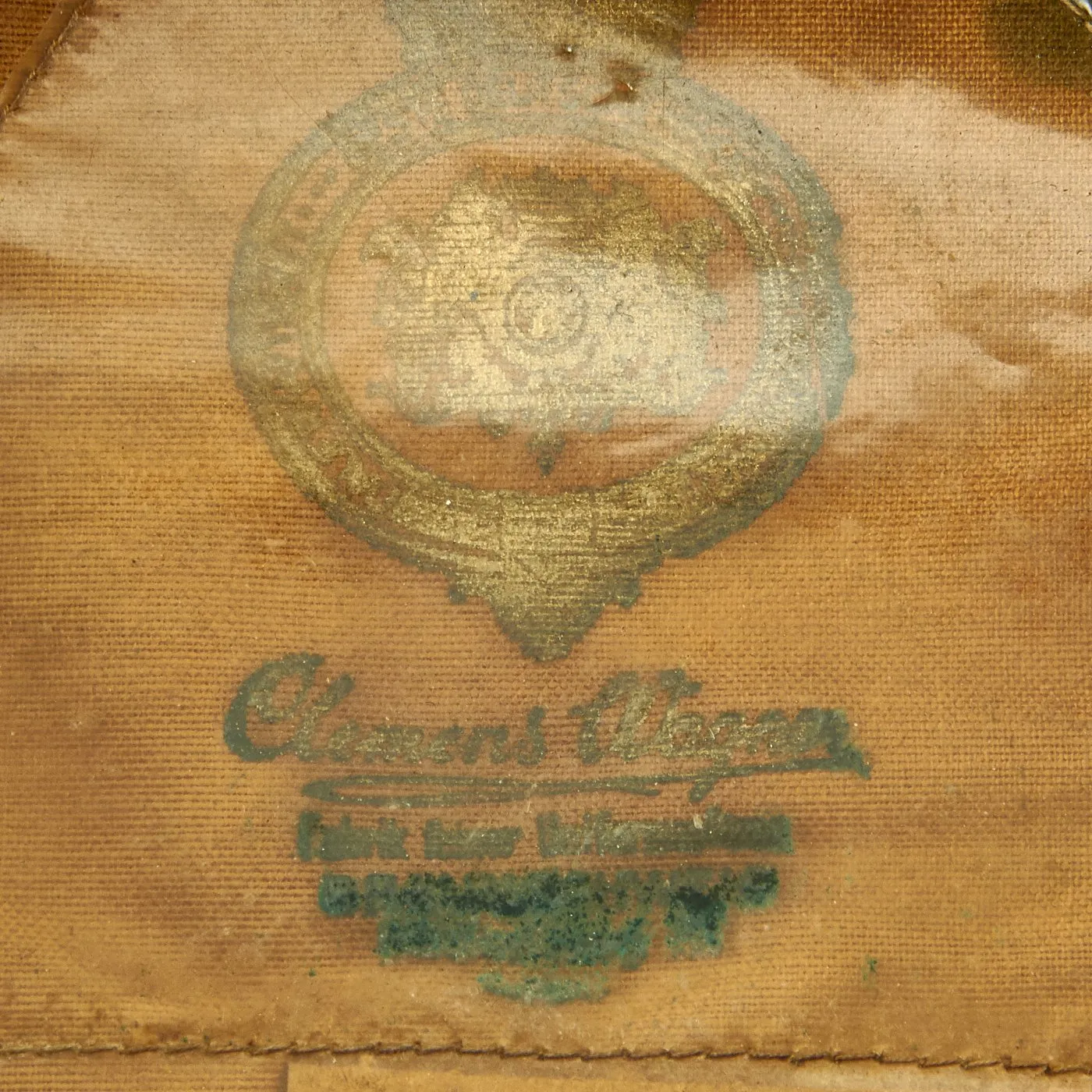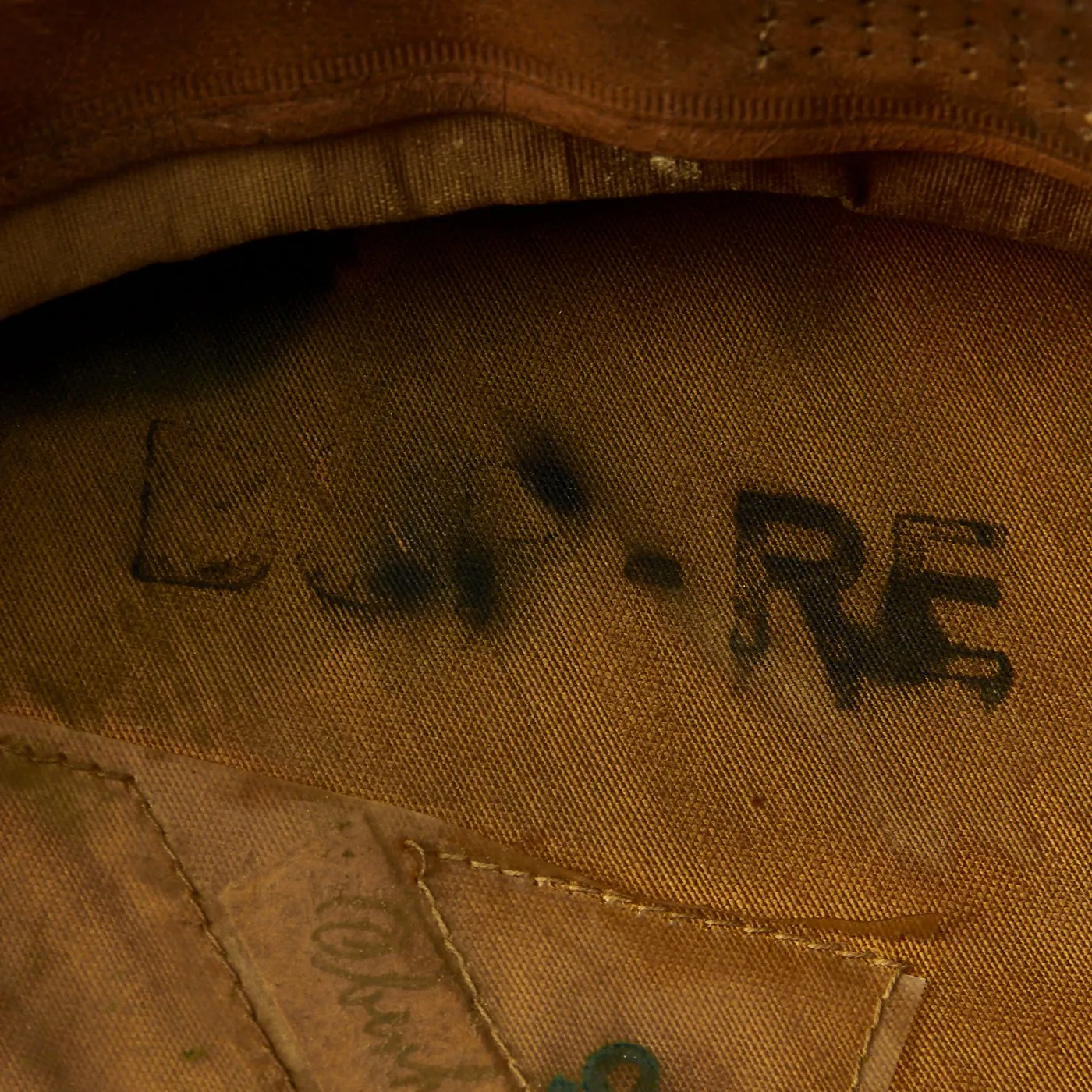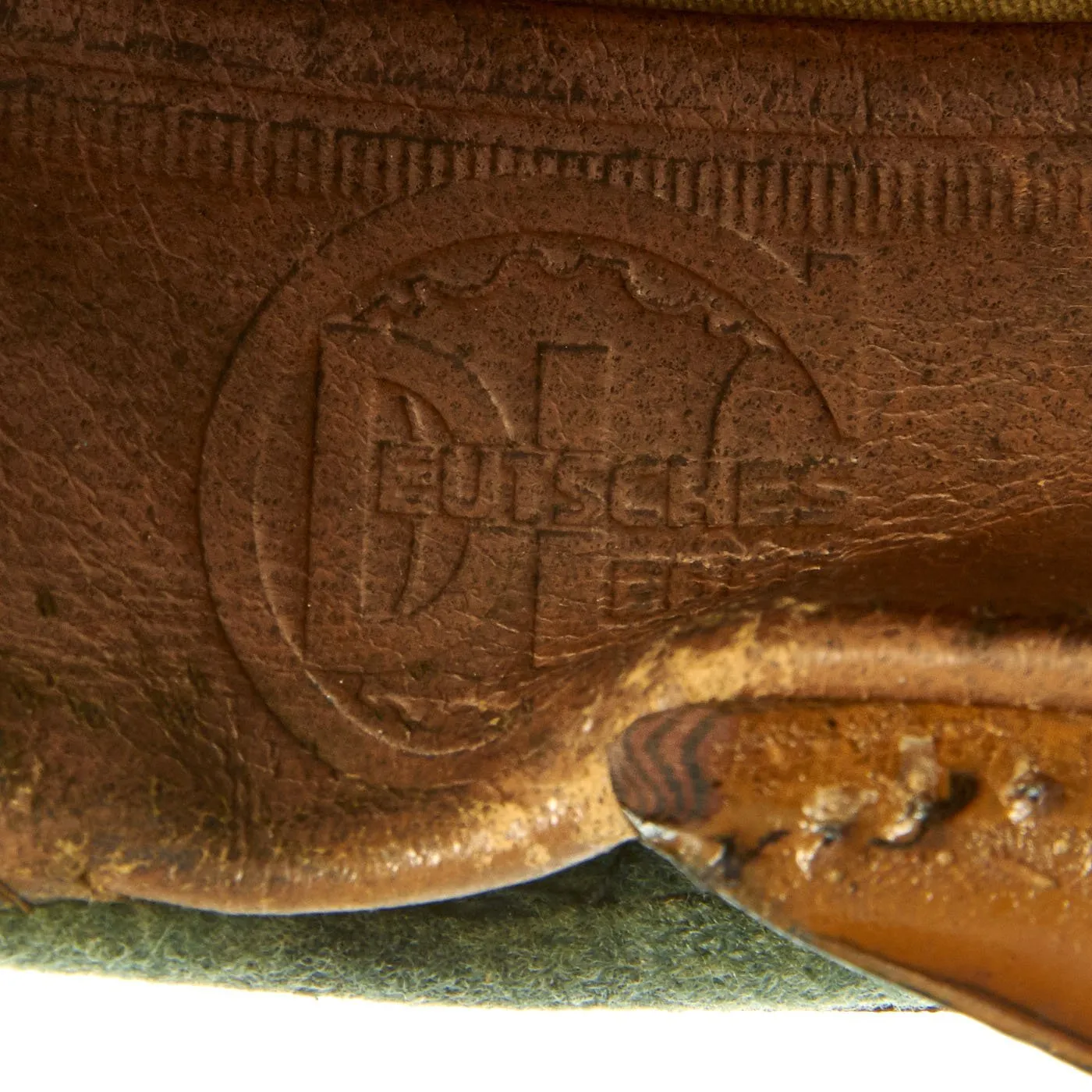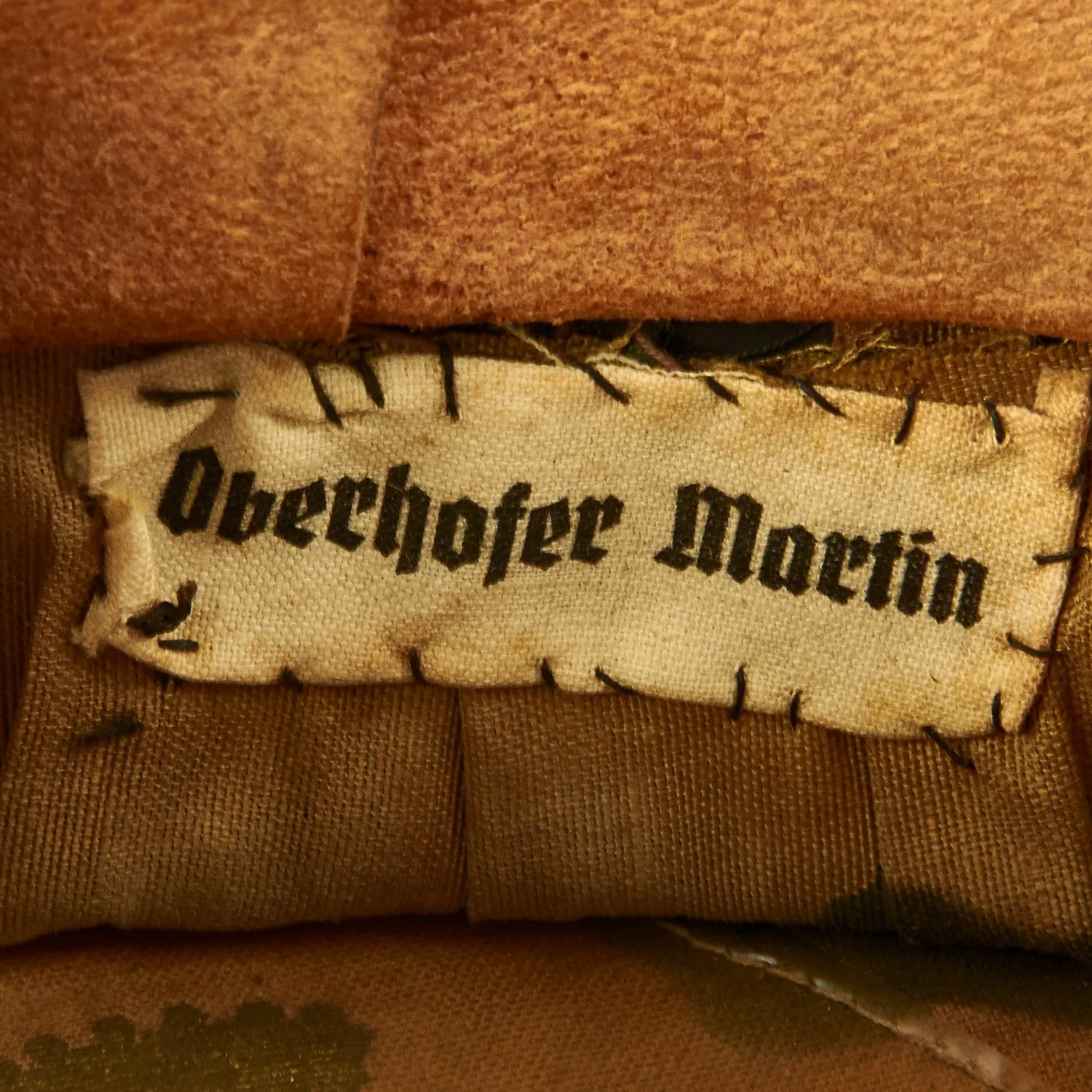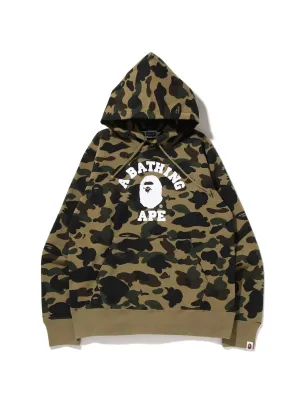Original Item: Only One Available. This is a really attractive example of a German WWII DRB Bahnschutzpolizei (Railway protection police) Schirmmütze (visor cap), complete with a name tag! This example shows high quality fabrication, made with the typical Heer style feldgrau (Field Gray) green / gray wool with a forest green band and a traditional high front. The cap has black Waffenfarbe (corps color) piping along the top edge and flanking either side of the band, indicating the branch to be Railway.
It is decorated with a well detailed silvered aluminum eagle insignia on the peak and and an open silvered aluminum oak leaf and acorn wreath surrounding a metal tri-color cockade on the band. The wreath also incorporates the "Winged Wheel" DRB emblem on the bottom, which is specific to the Railway Protection Police. The dual-buckled black leather chinstrap, designating the wearer to be an enlisted man, is attached to black lacquered buttons on either side. The vulcanfibre visor has a smooth black leather-look upper, exhibiting slight wear along the edge and is orange on the underside. The brown leather sweatband is in good supple condition and has an embossed maker mark on the left side.
The inside of the cap is lined with tan sheer fabric. The top plastic shield is fully present. It still bears the makers logo and name Clemens Wagner underneath, though the metal paint has oxidized to a greenish patina, and not all of the words can be read. The size is indicated as 56, and there is a name tag, though it cannot be read.
However there is also a name tag under the sweatband to the rear, which reads Oberhofer Martin, so we can see now that the name tag reads Oberhofer M.. There is also an ink stamp reading BSP - RE on the crown of the cap, but we do not know what the significance of this is.
The condition of the cap is quite nice, though as with many wool caps, there are some moth nips to the exterior The interior is quite nice, showing light to moderate wear, though it definitely has been exposed to moisture during service. The leather sweatband stitching has rotted out in areas, which is typical.
A very nice example of a rare German WWII Railway Protection Police visor cap, ready to add to your collection!
The visor cap (Schirmmütze) was an important part of the headgear worn by German uniformed military, civil, paramilitary and political organizations during the Third Reich. This was the standard cloth headgear worn as a part of the service uniform. Visor caps were worn outdoors as well as indoors, and were often required to be worn by all personnel on duty. Visor caps were made in versions specific to each organization and were often further differentiated through the use of insignia, colored piping, or style of chin cord, to indicate rank, role or branch. The insignia used on these caps ranged from simple stamped metal emblems, to elaborate hand embroidery. Visor caps were issued to enlisted soldiers and NCOs in the military and in some other organizations. Officers had to purchase their own hats, and lower ranks could choose to purchase caps that were of a higher quality than the rather basic, issue examples. The private purchase caps were generally made in very high quality, with fine materials. A wide variety of fabrics were used, from Trikot and doeskin, to heavy wool, or even lightweight white fabric for summer wear. In the military, issue of these caps was generally suspended shortly after the outbreak of the war, but they continued to be worn by some troops until the end of the war.
The Deutsche Reichsbahn, also known as the German National Railway, the German State Railway, German Reich Railway, and the German Imperial Railway, was the German national railway system created after the end of World War I from the regional railways of the individual states of the German Empire. The Deutsche Reichsbahn has been described as "the largest enterprise in the capitalist world in the years between 1920 and 1932", nevertheless its importance "arises primarily from the fact that the Reichsbahn was at the center of events in a period of great turmoil in German history".
Deutsche Reichsbahn (1937 to 1945)
With the Act for the New Regulation of the Conditions of the Reichsbank and the Deutsche Reichsbahn (Gesetz zur Neuregelung der Verhältnisse der Reichsbank und der Deutschen Reichsbahn) of 10 February 1937 the Deutsche Reichsbahn Gesellschaft was placed under Reich sovereignty and was given the name Deutsche Reichsbahn (DRB).
World War II and military use
The Reichsbahn had an important logistic role in supporting the rapid movement of the troops of the Wehrmacht for most of the important Pre-WWII and early war campaigns.
In all the occupied lands the Reichsbahn endeavored to incorporate the captured railways (rolling stock and infrastructure) into their system. Even towards the end of the war the Reichsbahn continued to move military formations. For example, in the last great offensive, the Battle of the Bulge (from 16 December 1944), tank formations were transported from Hungary to the Ardennes.
The DRB was instrumental to the entire functioning of the Third Reich, as the primary method for transportation of materiel and people. This unfortunately extended to uses for prisoners and Shoah victims as well.




